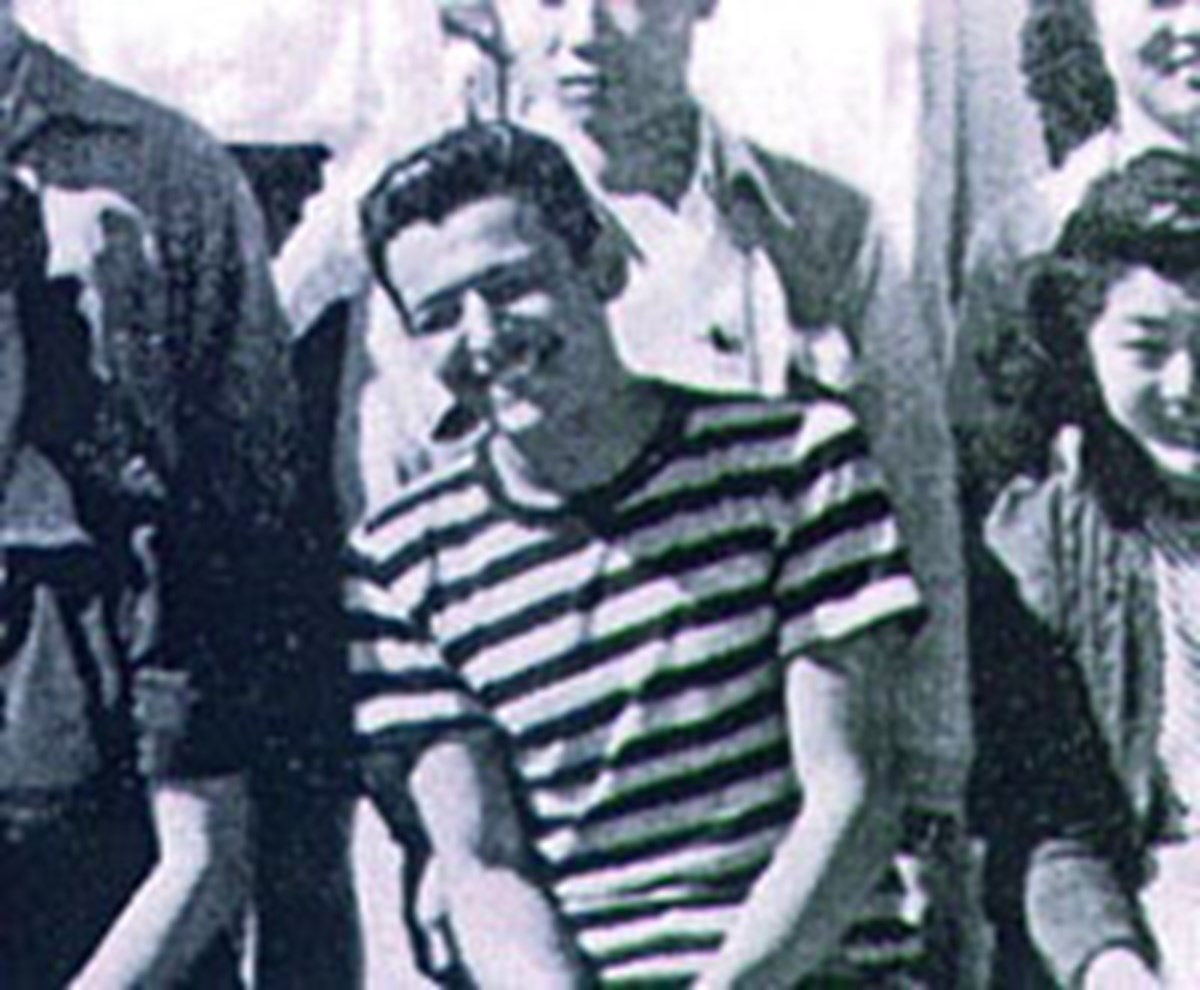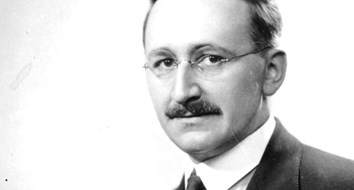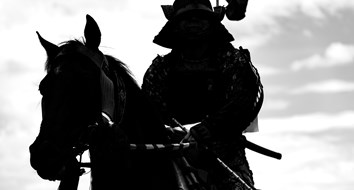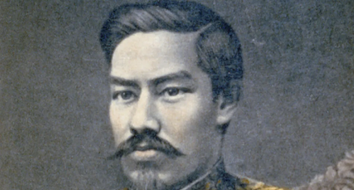The last New York Times editorial that made economic sense to me was headlined “The Right Minimum Wage: $0.00.” It was January 14, 1987.
I wouldn’t be surprised if the editorial writer discovered that the minimum wage isn’t the only thing that can lose your job for you.
However, I find at least the obituaries in The Times to be frequently fascinating and factual, which is why I post them on my Facebook page from time to time. One that ran in the newspaper on July 3, 2019, riveted my attention. It prompted me to learn some fascinating history from our own web site, FEE.org.
Lazo's Journey to the Internment Camp
The deceased, a man named Ralph Lazo, died more than 27 years before—in January 1992 at the age of 67. His belated obituary was part of the paper’s ongoing “Overlooked No More” series in which people who didn’t get the attention they deserved when they died are now given some recognition. The headline read, “Ralph Lazo, Who Voluntarily Lived in an Internment Camp.”
Voluntarily lived in an internment camp? Who in the world would choose to do such a thing and why? You should read the obit by Veronica Majerol in full yourself, but I’ll summarize it for you here:
Ralph Lazo, a Mexican-American from southern California, was 17 when the Japanese bombed Pearl Harbor in December 1941. He had grown up around many youngsters of Japanese ancestry and counted some of them as his best friends. When he saw them rounded up by the US government to be shipped off to desert camps, he went with them. He thereby became “the only known person to pretend to be Japanese so he could be willingly interned.”
Majerol writes:
What compelled Lazo to give up his freedom for two and a half years—sleeping in tar-paper-covered barracks, using open latrines and showers and waiting in long lines for meals in mess halls, on grounds surrounded by barbed-wire fencing and watched by guards in towers? He wanted to be with his friends.
Irrational National Security Concerns
The internment of almost 120,000 Japanese Americans in the wake of Pearl Harbor remains one of the blackest marks against the administration of Franklin Delano Roosevelt, the same man who snubbed Olympic medalist Jesse Owens because Owens was black. It flew in the face of the very report Roosevelt commissioned from his State Department’s Special Representative, Curtis B. Munson, who told the president that Japanese Americans were loyal and posed no threat. “There is no Japanese ‘problem’ on the Coast,” wrote Munson. “There is far more danger from Communists and people of the [Harry] Bridges type on the Coast than there is from Japanese.”
Concerns for national security were neither valid nor were they the main reason for FDR’s infamous Executive Order 9066 of February 19, 1942.
Archived on FEE.org are tens of thousands of articles (as well as hundreds of videos, eBooks, and online courses) representing more than 60 years of content—all free and easily accessible. When I read the Lazo obituary, I wondered what we had published on the subject of “Japanese internment.” So I popped those two terms into the search engine, and three particularly good pieces came up instantly.
In July 1995, FEE published “Special Interests and the Internment of Japanese-Americans During World War II” by Melody Hill and Steven Caudill of Auburn University. The authors explained that, as the Munson report’s findings would suggest, concerns for national security were neither valid nor were they the main reason for FDR’s infamous Executive Order 9066 of February 19, 1942. They note that “no mass detainment of people of Japanese ancestry occurred in Hawaii,” which was, of course, not yet a state but far closer to Japan than California and home to even larger numbers of Japanese.
Special Interests at Play
So why the mass internment in California? Hill and Caudill offered this startling explanation:
The answer: special-interest groups seeking protection from the competition of Japanese and Japanese-Americans residing on the West Coast. Labor unions and farmers wanted the Japanese out of California and off the land long before the attack on Pearl Harbor. World War II and the bombing of Pearl Harbor provided a handy opportunity for these groups to complete a task that they started several years earlier.
What follows in the Hill/Caudill article is a shocking chronology of anti-Japanese legislation at both the state and federal level—pushed largely by organized labor because unions hated competition from Japanese workers. FDR catered to his political allies in the union movement throughout his presidency. Locking up Japanese Americans was yet another favor to a Democratic Party constituency. If your unionized, government-school history teacher who reveres FDR forgot to tell you this, you really need to check out the Hill/Caudill article.
If you’re tempted to dismiss these facts before you read them, think about this: In 1988, the US government itself, under President Ronald Reagan, formally apologized for the internments and publicly admitted they were not justified by legitimate security reasons.
Roosevelt's Deep-Seated Resentment of Japanese
In November 2015, FEE republished “The Census Helped Imprison Japanese Americans” by James Bovard. It first appeared in USA Today. The author revealed that the US Census Bureau “brazenly violated federal law by providing key information on Japanese Americans so that the Army could round them up for internment camps.”
The Census Bureau denied its involvement for six decades until a trove of official documents was discovered and conclusively proved otherwise. Bovard warned:
Americans rarely find out about government abuses until long after the deed is done. If politicians decide to order another mass roundup of unpopular minorities, the Census will likely again serve up the names and addresses on a silver platter.
In December 2015, FEE published “America’s Concentration Camps Are a Warning, Not a Model” by Gary McGath. Though the term “concentration camp” would take on a more sinister and deadly connotation with later revelations from Nazi-occupied Europe, FDR himself used it to describe the camps he ordered set up in the deserts of the American Southwest.
Roosevelt’s disdain for the Japanese, asserts McGath, was a prejudice he harbored for years before he ever became president. McGath cites the exceptional book, The New Dealer’s War. There, the noted historian Thomas Fleming pointed out that when FDR suggested removing and interning even the larger number of Japanese in Hawaii, “the military objected because so many of them were skilled workers who were necessary to the war effort.” McGath concludes:
For the sake of a false sense of security, the U.S. government ruined countless lives, imprisoned tens of thousands without charges, without even accusation, with only the mere fact of their skin color and ancestry. The internment stoked hatred against a minority group, squandered potential assets in the war, and fueled the Axis’s anti-American propaganda.
The story in Ralph Lazo’s belated obituary reminded me of a Biblical passage. In John 15:13, Jesus said, “Greater love has no one than this: to lay down one’s life for one’s friends.”
Lazo survived internment, as did all but a few of those he chose to be incarcerated with. But when he made that courageous decision to join them, he couldn’t have known what lay ahead. I’ll bet he would have given his life for his Japanese-American friends if it had come to that.
We must never forget, however, what Franklin Roosevelt did, and we must be vigilant that nothing like it ever happens again.
Probe deeply enough, and every country in the world could cough up some ugly moments from its past. Official apologies, no matter how long delayed, are rare. Fortunately, this story includes one.
We must never forget, however, what Franklin Roosevelt did, and we must be vigilant that nothing like it ever happens again.
(Editor’s Note: In addition to Ralph Lazo’s obituary cited in this article, see this half-hour 2004 film titled Stand Up For Justice: The Ralph Lazo Story.





